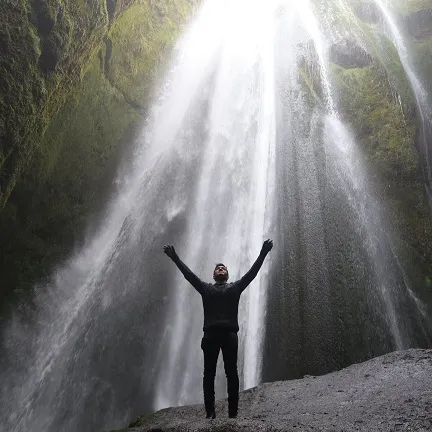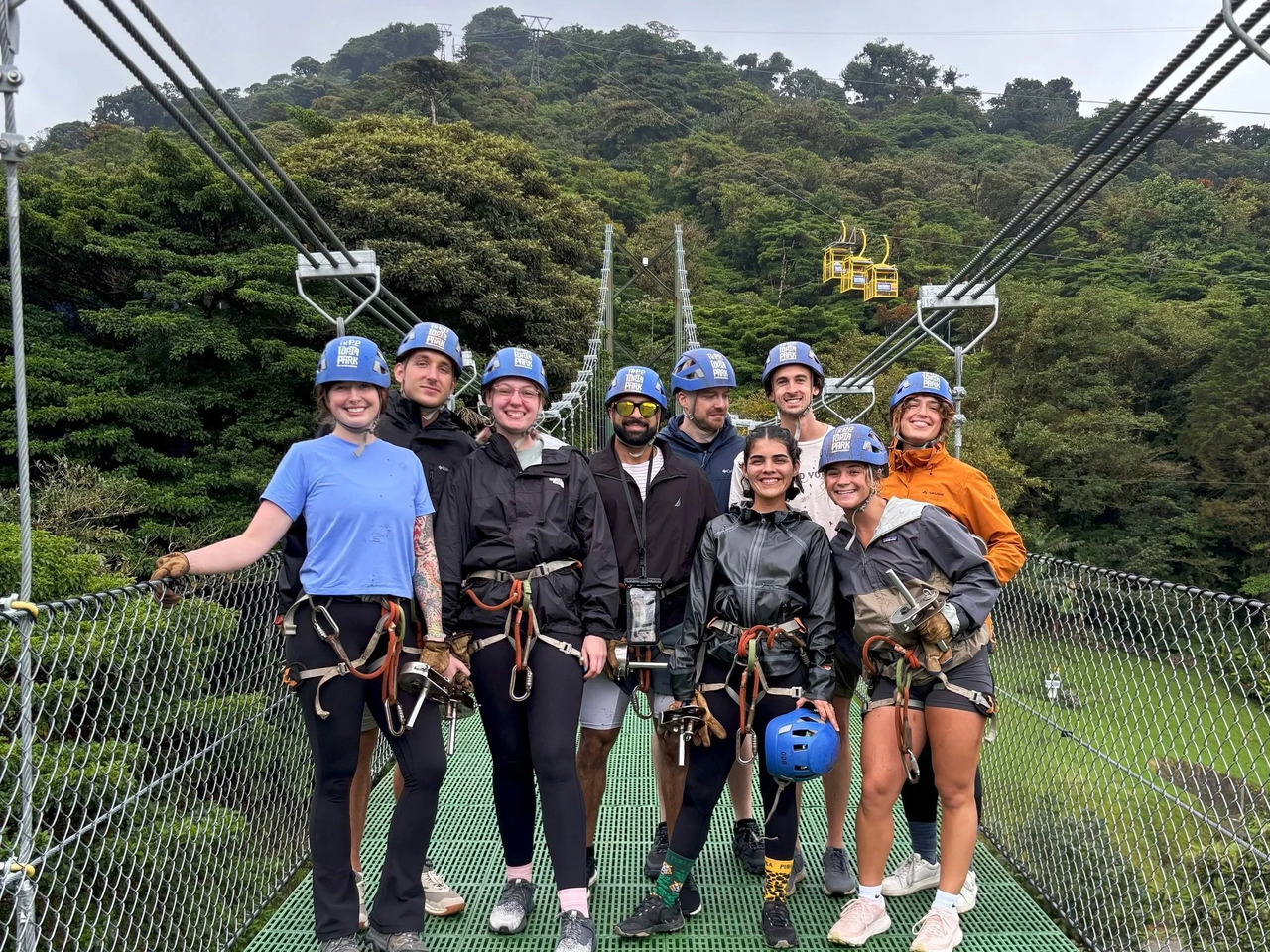Whether you are searching for your first pair of hiking boots or just in need of a new pair, finding the perfect fit can be challenging. The selection of brands, styles, designs, and features seems to be endless. No one wants to be hiking around in an uncomfortable pair of hiking boots, thus we’ve put together this guide to help you choose the right hiking boots for your next outdoor adventure.
Quick Tips When Buying Hiking Boots
- Try on multiple pairs
If purchasing your hiking boots at a store, selecting a few different brands will give you a better feel of which brand is good for you. Certain brands fit individual feet better than others. For example, Keen boots are popular for people with wide feet where Saloman tends to fit better for people with narrow, slender feet.
- Wear Appropriate Socks
When trying on new shoes you should wear the socks that you typically wear while hiking. This will help you access the proper fit and feel of the new footwear.
- Try Boots on Later in the Day
Our feet swell as we move around throughout the day. Trying hiking boots on when our feet are at our largest will help us in not choosing a boot that is too small. Also, it will mimic how our feet feel after a full day of hiking.
- Take a Walk Around the Store
You are about to spend a decent amount of money on your new hiking boots. Take the time to get a feel for them. Walk up and down the store aisles, take a slow jog, look for areas with a slight incline. Basically, create the best testing environment that you can.
- Check the Store’s Return Policy
No matter how much you test your new hiking boots in the store, you will not get a real feel for them until you have broken them in. Some outfitters, such as REI and L.L. Bean, will let you return or exchange products that have not met your satisfaction within a year of purchase.
New to camping? Check out our Camping Tips: A Beginners Guide to Their First Trip.
Types of Hiking Boots
Deciding on the right type of hiking boot mostly comes down to personal preference and the hiking you typically do. For example, there is no need to buy a high-tech, expensive pair of mountaineering boots if you only do short day hikes in the Midwestern United States. When choosing your type of hiking boots first define your hiking preferences: casual day hiker, multi-day backpacker, or extreme mountain climber.
Light hiking shoes
These resemble hefty running shoes. They are low-cut models with flexible midsoles, lightweight, and fitted with quality tread for any terrain. There are even models that are designed to go around each of your toes individually. This style is perfect for day hikers though ultralight backpackers are beginning to use them for long-distance journeys.
Mid-rise to high-rise hiking boots
As the name suggests, these are designed with cuts that come up to or over your ankle. They often flex easily and give better support to the ankle than light hiking shoes. This style is intended for longer day hikes and short backpacking trips. These are not as durable as backpacking boots. If you have sensitive ankles and don’t plan on doing any extreme hikes, then these boots are best suited for you.
Backpacking boots
These boots are designed to handle a variety of terrain, both on and off the trail. They are preferred for difficult hiking where a hiker is expecting mud, snow, or water crossings. Backpacking boots are durable and supportive, with stiffer midsoles than lighter footwear. If you are heading out for a multi-day trek, then these boots are for you.
Mountaineering boots
These weightier boots with stiff midsoles are designed to stand up against the toughest terrain. They are built to handle heavy loads and designed to accept crampons for glacier travel.
Note: Some boots and shoes straddle transition zones between the different styles. Each individual’s hiking style determines what footwear works best.
Boot Cut Designs (Low, Mid, High)
Low-cut shoes
Best for lightweight travel and a good choice for your common day hiking, especially on maintained trails and non-rugged terrain. Not suited for hikers with sensitive ankles due to low roll-resistance. Feet are also vulnerable to debris invasion from rock scree, grit, sand, or mud.
Mid-cut boots
These provide better support to your ankles than low-cut shoes while providing protection from debris on the trail. For hikers that do short multi-day trips with moderate loads, these are a great fit.
High-cut boots
These high-cuts are great for hiking on uneven terrain due to the ankle support they provide. The extra protection around the feet also helps with off-trail travel. If you plan to carry heavier loads when backpacking, these boots are great for you. Please note that high-cut boots do take longer to break-in.
Read our Essential Camping Gear Checklist to prepare for your next camping adventure.
Hiking Boot Materials
The material that composes the hiking boot is very important in maintaining the boot’s weight, breathability, durability, and water resistance. The wrong material can impact your overall satisfaction on the trail.
Synthetics
Often nylon and polyester, these are easy to break in, feel light, and dry faster when wet. Boots made of synthetic material often are more affordable. Two downsides are they tend to wear down quicker and are less water-resistant.
Split-grain leather
Often made with half leather half synthetics, this combo cuts down on weight and offers excellent breathability. Similar to regular synthetic material, split-grain leather lacks durability and is not as water-resistant as full-grain leather.
Full-grain leather
This durable material is great for adventurous hikers looking to traverse multiple terrains and explore off-trail. Full-grain leather offers great resistance to abrasion and water. The main downside is they tend to be heavier and not as breathable. Full-grain leather hiking boots take some time to break in as well.
Waterproof membranes
If a boot is labeled “waterproof” it is most likely constructed with waterproof membranes such as Gore-Tex or eVent. These are great for hikers who often hike in snow or wet conditions because they keep the foot dry. The membrane around the boot does reduce breathability and can make your feet hot on the trail.
Hiking Boot Midsoles
The midsole provides cushioning and buffers the feet from shock. The midsole largely determines how stiff the hiking boots are. You will want a stiff boot if you plan to hike long distances on rocky, uneven terrain. The two common midsole materials are EVA (ethylene vinyl acetate) and polyurethane.
- EVA tends to be a bit cushier, lighter, and less expensive. This material is common for light hiking shoes.
- Polyurethane is generally firmer and more expensive. This material is common for extended backpacking and mountaineering boots.
Need help figuring out what to cook on your next camping trip? Check out our Camping Menu: Easy Meal Ideas for Every Camping Trip.
Find the Right Fit
While choosing the right material, selecting your preferred cut, and accessing the right type of hiking boot is important, none of these elements are as important as ensuring the boot is the proper fit for your foot.
Hiking boots should feel snug, yet comfortable. You should only feel a little wiggle room around the toe area. If your foot is sliding around inside your shoe that is not a good sign. This will only lead to blisters. Then again, if your foot is too compressed inside the boot at the store then you will experience pain on the trail as your foot swells from all the activity.
One rule of thumb is to buy a hiking boot that is one half-size up. This will allow for space in the toe area while also compensating for feet swelling, or hiking while wearing thicker socks if hiking in cold weather.
Be aware of seams or pressure from different parts of the boot. You don’t want to feel odd bumps or seams against your foot. These will aggravate your foot on the trial and lead to discomfort.
Helpful Tips For Hiking Boots Maintenance
Hopefully, this guide helps you find the best fit for your hiking boots. Here a few more tips regarding hiking boots to help with any additional questions or concerns.
- Break your boots in before your first hike. Too many people overlook this. Hiking boots take time to break-in. Walk around your house with them on, wear them on short walks around your neighborhood, or you can even wear them home from the store.
- Clean your hiking boots regularly. If you go on a muddy hike be sure to remove the dirt when you get home. Dried-up mud on your boots will damage the waterproofing material. You can also clap your boots together at the campsite or scrape the soles with a stick to remove the dirt.
- Remove insoles after a hike. Insoles hold moisture which can cause your hiking shoes to smell or build up bacteria. Simply remove them and let them air-dry in a well-ventilated place.
- Loosen the laces when storing. Keeping the laces tight will keep the boots rigid and over time can lead to less flexibility.
- Store hiking boots in a well-aired and dry environment. Direct light can wear on the material and dry up leather. Do not store your boots in a plastic bag for any length of time. You want them dry to avoid odor build-up.
- Make use of old newspapers. If your hiking boots are wet, stuffing newspapers inside of them will draw the dampness out of the interior.
- Don’t forget to draw out foot odors! In between uses, you can periodically sprinkle baking soda inside the boots and let it sit for a day or more. Shake it around to distribute to the sole and sides. Then, dump the used baking soda into the trash, knocking your boots against the inside of the trash can to remove built up baking soda. If you can’t find baking soda, foot powder or baby powder can also be used.
Additional hiking and camping related articles from Under30Experiences:
- Top 20 USA Camping Destinations for your First Trip
- Tent Buying Guide: How to Choose Your First Camping Tent
- Sleeping Bag Guide - How to Choose the Best One for Camping
For more great travel guides and all of our best content make sure you are signed up to our travel blog newsletter.




.avif)


























